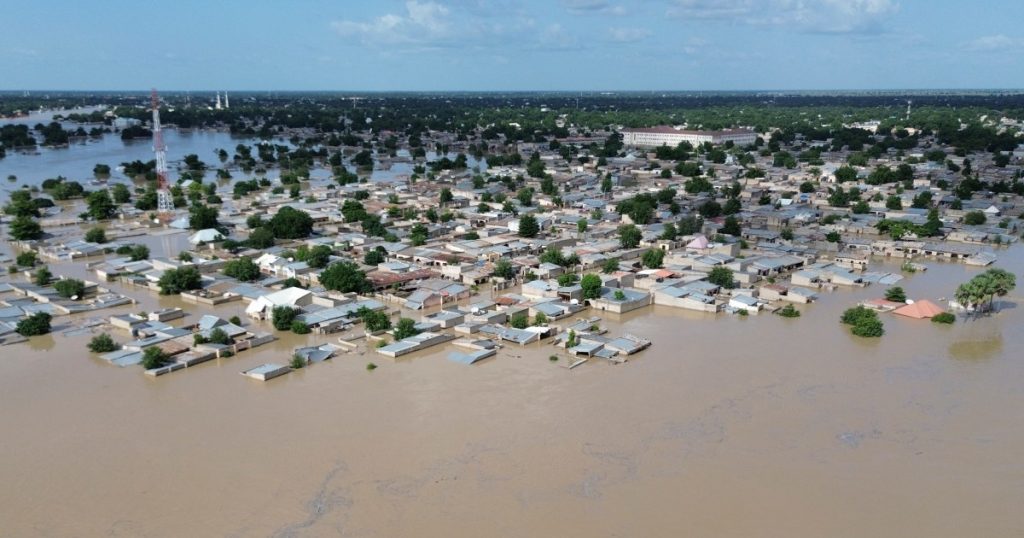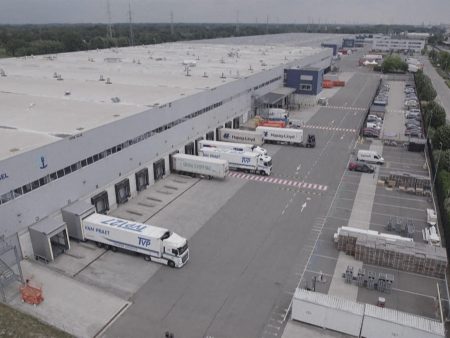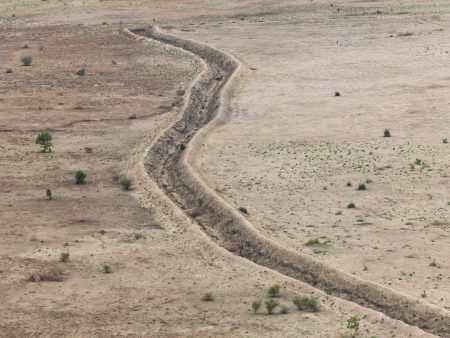Devastating floods have struck northeastern Nigeria, particularly Borno State, submerging residential areas, displacing tens of thousands of people, and prompting zoo animals to escape into the streets. At least 30 people have died in the floods, with the death toll expected to rise as authorities struggle to rescue those trapped in their homes. Maiduguri, the state capital, has been significantly impacted, with reports indicating the worst flood in the region in 30 years.
The floods were triggered by excessive rainwater flow during the rainy season from June to September. The Alau Dam near Maiduguri burst its banks due to heavy rainfall, causing widespread damage and destruction. Built in 1986 for irrigation purposes, the dam also helps control flooding from the Ngadda River, which can receive high inflows from sources connected to Lake Chad. The incident has affected about one million people, with approximately 200,000 individuals displaced as a result.
The flood-affected areas are also dealing with the dangerous aftermath, including people trapped in buildings and trees, limited access to canoes for evacuation, and ongoing search and rescue efforts. The floods have destroyed crucial infrastructure, including healthcare facilities, which increases the risk of infectious diseases. With damaged septic tanks and flooded graveyards, fears are rising about potential disease outbreaks, further straining resources and capacity to respond effectively.
A significant concern is the displacement of wild animals from the Sanda Kyarimi Park Zoo, with reports indicating that 80 percent of the zoo’s animals were either killed or washed away by the floodwaters. Dangerous animals have escaped into communities, including crocodiles and snakes, posing risks to residents. The zoo housed a variety of wildlife, including endangered species like elephants and lions. Efforts to contain and rescue escaped animals are underway to protect both the animals and the population.
In addition to the immediate impact of the floods, there are broader concerns about food security in a region already grappling with high rates of malnutrition and food insecurity. The flood has exacerbated an existing food emergency, with millions of people lacking access to food due to high inflation and the ongoing conflict with Boko Haram. Farmers have been targeted and killed on their farms, further reducing local food production and exacerbating the crisis. Authorities are distributing aid to those affected by the floods, but the destruction of markets and food stocks has severely limited access to essential supplies.
The inadequacy of preparedness and response measures has been highlighted, with warnings about potential flooding being issued months in advance. Despite the advanced notice, the lack of robust disaster preparedness and response mechanisms has left many vulnerable populations at risk. The government is facing challenges in addressing the multifaceted impact of the floods, from rescue and relief operations to addressing long-term food security and rebuilding efforts. The coordination of efforts between national disaster agencies, local authorities, and humanitarian organizations is crucial in mitigating the ongoing crisis and supporting the affected communities.













